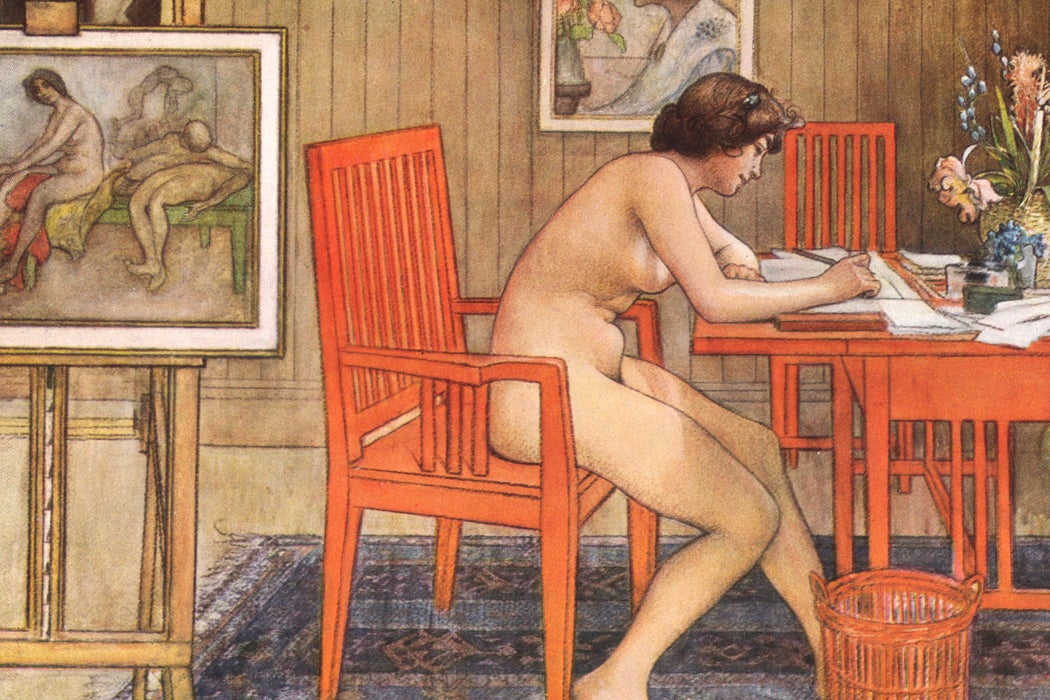Here is a link to a summary of a academic article tilted Utopian Bodies and Anti-fashion Futures: The Dress Theories and Practices of English Interwar Nudists. If you have (or mostly likely your school) has access to Jstor you can read the full article for free.
https://daily.jstor.org/better-living-through-nudity/ Better Living Through NudityIn England in the 1920s and ‘30s, nudism was ideological and utopian. Then the Nazis coopted the concept for their eugenicist Nacktkultur movement.

By:Livia Gershon
October 28, 2018
3 minutes
Today, nudism tends to show up in popular culture as a quirky lifestyle or an easy punchline. But in England in the 1920s and ‘30s, art and design historian Annebella Pollen writes, it was a utopian movement that some hoped might perfect society.
Gymnosophists, a label nudists adopted combining the Greek words for nakedness and wisdom, described their movement in utopian terms. One writer noted that some people experienced “the vague sense of something lacking, of complete happiness never quite achieved… Our experience leads us to suggest that nudity will supply the need.”
Another encouraged readers to “dispense with clothes and with all attributes that are mean, vainglorious and untruthful, and by doing so usher in the Golden Age.”
The nudists’ rhetoric was an extreme version of dress reform arguments that had already helped render corsets and long skirts obsolete. A common nudist complaint was that men’s fashion lagged behind women’s. One writer described waistcoats as a “mongrel born of a tailor’s nightmare. With no arms, half a front and an apology for a back, it is good for nothing beyond collecting junk in the pockets.”
The more moderate believed that exposing the skin to sunlight and air had physical and mental health benefits, but found total nudity to be unnecessary. But some suggested that complete nakedness was crucial to “dispel fear,” or for the sake of health. C.E. Norwood, an Anglican clergyman, wrote that “it is important that the sexual organs are exposed”—for medical reasons.
Pollen writes that part of the gymnosophists’ point was to release the body from cultural shame and from an automatic association with sex. Some nudists hoped for a day when “a person who wears more than a loin cloth on Regent Street will be stigmatized as indecent and degenerate.” But, given the legal hazards and worries about being viewed as exhibitionists, practitioners had a limited choice of places where they could be naked. In the summer, there were wilderness camps and beaches. In the winter, gymnosophists retreated to indoor clubs with ultraviolet sun lamps and carefully vetted members.
There was also a dark side to the utopian project. Nudist magazines invariably showcased fit, thin, white bodies. Many nudists argued for the practice as a way to counter the “deception” of fancy clothes and makeup, promoting eugenicist sexual selection.
In fact, the Nazi Party harnessed nudism to create the popular Nacktkultur movement. While the Nazis began outlawing nudist groups in 1932, they also coopted their sense of cultural crisis and celebration of bodily ideals. One Third Reich text declares: “We celebrate the women with the best racial background and the most beautiful bodies for breeding… No one will be able to conceal his or her flaws and weaknesses behind clothes.”
In the wake of World War II, Pollen writes, English nudism was drained of ideology. Modern nudists embrace the practice for relaxation and a sense of personal freedom, not in the hopes of ushering in a new Golden Age.
Editors’ Note: An original version of this implied that nudism as a concept spread from England to Germany, which is incorrect. We apologize for the error.
Have a correction or comment about this article?
Please contact us.
Utopian Studies
JSTOR logo
Resources
JSTOR is a digital library for scholars, researchers, and students. JSTOR Daily readers can access the original research behind our articles for free on JSTOR.
Utopian Bodies and Anti-fashion Futures: The Dress Theories and Practices of English Interwar Nudists
By: Annebella Pollen
Utopian Studies, Vol. 28, No. 3, SPECIAL ISSUE: UTOPIA AND FASHION (2017), pp. 451-481 (31 pages)
Penn State University Press